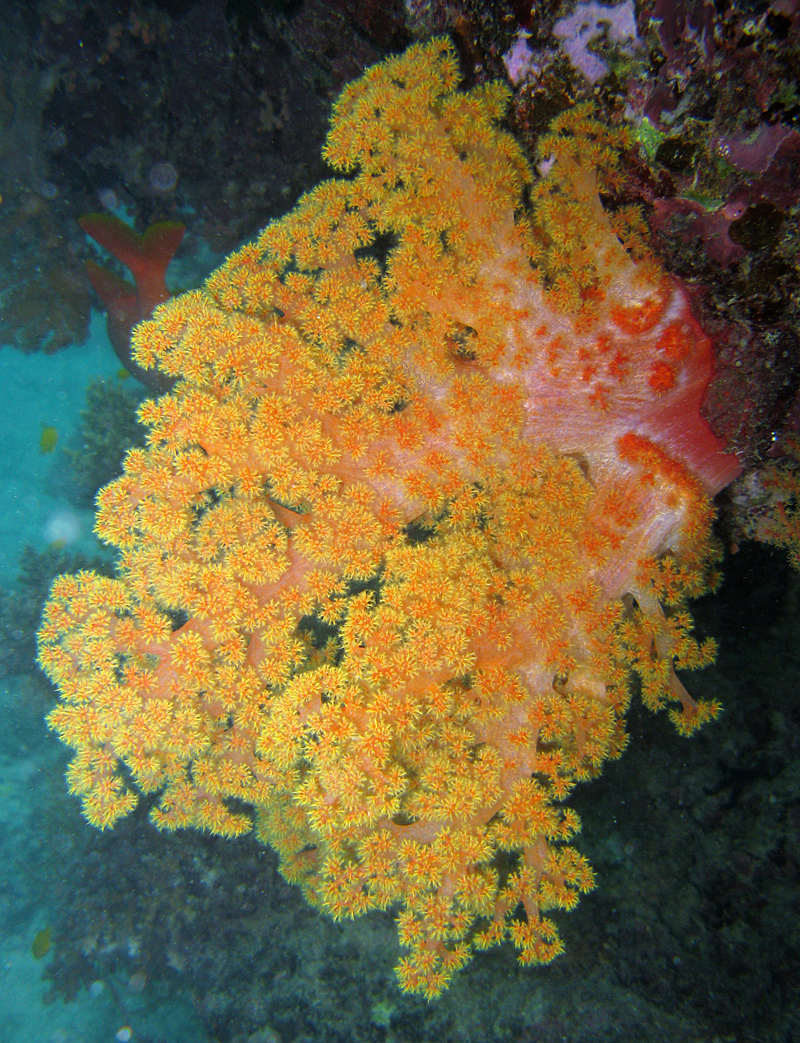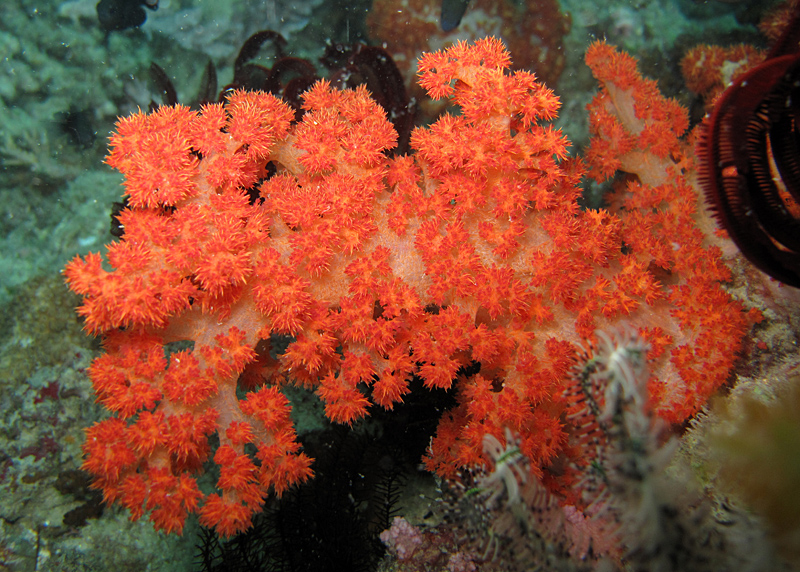�
�
�
���
Dendronephthya
Carnation coral
Kingdom
Animalia
Phylum
Cnidaria
Class
Anthozoa
Order
Alcyonacea
Family
Nephtheidae
Genus
Dendronephthya
Distinguishing features
A genus of soft corals with a distinct stalked morphology. Polyps are found in small clusters on the upper branchlets, but not generally on the main stalk. Polyps are monomorphic and non-retractile. The colony is capable of changes in size, facilitated by water retention, and they are rough or prickly to the touch, due to the presence of numerous calcium carbonate sclerites embedded in the tissue.
Size
- Size data has not been obtained.
Synonyms
Interesting facts
- The ocean is so full of life that corals like the Carnation coral survive by drinking it. The Ocean is also full of animals and bacteria that float around looking for flesh to eat and land on the surface of corals to devour them. To protect themselves the carnation coral has armies of bacteria all over its skin, bacteria that wage war on these intruders, using chemicals to fend them off or killing them and eating them. All corals probably have these communities of good bacteria, and so do you. In fact there are more bacteria in and on your body than there are cells that make up your body. Guardian: Kathryn Arenas
Distribution and habitat preferences
Walls along reef fronts below 5m with good water movement but limited stress from wave action.
Can be found in most reef habitats around Lizard Island.
Web resources
References
- Fabricius, K.E. (1997). Soft coral abundance on the central Great Barrier Reef: effects of Acanthaster planci, space availability, and aspects of the physical environment, Coral Reefs, 16(3): 159-167.
- Fabricius, K. and P. Alderslade (2001). in: Soft corals and sea fans: a comprehensive guide to the tropical shallow water genera of the central-west Pacific, the Indian Ocean and the Red Sea. Australian Institute of Marine Science, Townsville.
- Goulet, T.L., T.C. LaJeunesse and K.E. Fabricius (2008). Symbiont specificity and bleaching susceptibility among soft corals in the 1998 Great Barrier Reef mass coral bleaching event, Marine Biology, 154: 795-804.







